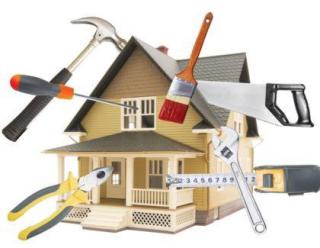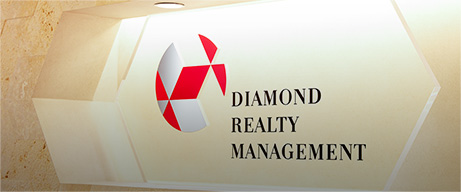
An LLC is a great option for protecting your assets. These businesses are structured as corporations and are subject to tax at an individual level.
An LLC can provide liability protection, pass through taxation and simplified paperwork. A LLC protects your personal assets, and allows you to manage your business with flexibility.
A property management LLC is a separate entity, which means it is not owned by you. An LLC to manage your rental properties helps protect your equity, and reduce your tax burden. You are also protected against lawsuits. However, it can be costly.
An LLC may require you to pay some money for its creation. You should hire an expert to help you with complicated structures. While it can take time, an LLC is the most effective asset protection strategy you can find.

Generally, real estate LLCs are not subject to a corporate tax. This allows them access to a 20% deduction on their business income taxes. A LLC can also offer liability protection for each rental asset.
A single member LLC is formed by filing organization documents with your state government office. Multi-member LLCs can also be formed. These LLCs have a parent corporation and subsidiary LLCs.
Companies that respond to your concerns and questions are the best to work with. LLC Property Management in California, for example, has been providing exceptional services to property owner since years. They have a great crew and are easy-to-work with.
Often, a property management LLC will have more than one owner. You can add members as needed to the LLC. Every owner is called a "member". While each member may have an interest in specific properties, the LLC will own the actual ownership. Make sure to speak with your tax professional and your attorney to determine the best structure for you investment.
Be sure to discuss financial arrangements and member rights when you create an LLC. Operating agreements are designed to explain how profits will be divided, what happens when an owner moves, and how an LLC will be managed.

Property management fees are usually swept into the Mgmt Company's operating account. Capital Account deficits are not the responsibility of members. Profits are passed through the members based on the percentage of ownership.
A property management LLC is a great business venture. It does have its risks, just like any other business venture. You could be sued for damages beyond the insurance limits if your tenant is a bad one. A lender may also seek your personal guarantee on a mortgage.
An LLC is a great tool for people who wish to own or manage rental properties. The LLC will provide protection from creditors and possible lawsuits. However, you will need to pay the costs of setting it up.
FAQ
When is it the best time for a handyman to be hired?
There is no right time to hire a handyman. You should get started as soon you can. It is possible to wait until after the holidays to save money. However, you can always pick up your phone and call different handymen.
Which is easier, contracting or being handyman?
Because you only need tools and yourself, being a handyman is more time-consuming than contracting. Contractors rely on subcontractors to complete most of the work. You must manage your own schedule and workload.
What should I choose: hourly or per-project?
Personal preference will dictate the final price. Some prefer to pay per hour so they can see the actual cost of their handyman. Some prefer to pay for each project, even though they may be doing multiple jobs at once. Both are fine.
Are handymen insured?
Yes! Yes. Most insurance companies cover liability claims over $1 million for accident property damage or bodily harm. Your insurance company will typically compensate you for damages if there is a problem during the project.
Do professional handyman services really make sense?
It depends entirely on the project. If you need a complex construction project like an office renovation, then a professional handyman service would definitely be beneficial.
How long does a handyman take?
To be a professional handyman it takes years of hardwork. It begins with helping friends and families and grows to become a full-time profession.
As you work, you will begin to acquire all the skills required.
Can a handyman put in new fixtures or appliances for me?
These projects are best left to the professionals. Be sure to identify the appliance or fixture that will be installed before you start.
Statistics
- More than 20% of homes in America have outdoor living spaces, including decks and patios. (mrhandyman.com)
- “Once the pandemic hit, that number fell to about 20%.” (inquirer.com)
- Another estimate was that the market in the United States was $126 billion and was increasing by about 4% annually. (en.wikipedia.org)
- Our handyman services for seniors are provided by professional senior helpers who have been serving the community for over 20 years with 98% customer satisfaction. (cantatahomeservices.org)
- A franchise was approximately $110,000 with a franchise fee of $14,900, according to a spokesperson for a national handyman franchise. (en.wikipedia.org)
External Links
How To
How to Replacing a Broken Tile
Step 1: Remove the old tiles.
Removing the tiles from your flooring is a good idea. These tiles should be kept intact in case you need them again. If they're damaged or missing pieces, note which ones they were so you don't run into problems finding replacements.
Step 2: Choose New Tiles
Here are some options for tile repair.
-
Find a new tile that's similar to the one you removed.
-
You can use the measurements taken when you removed the tile to locate a matching piece. This will allow you to quickly find the right size, without having to measure again.
-
Look for various colors, patterns, textures, sizes, shapes, etc.
-
Consider the grout you want to use. Some prefer a solid color, while others like mixing it up.
-
Choose a tile that resists moisture.
-
Also, think about where you want to place your new tile. This will help you save time and money.
-
Once you've decided on your tile, you can order it online or by calling your local Lowe's to place your purchase.
Step 3 – Install the new tiles.
To install your tiles, follow the same procedure as before. It's important to align them correctly in order for them to fit together.
Step 4 - Clean up
Be sure to sweep up all debris from the floor before applying the final protective layer.
This will prevent dirt and dust from settling into the cracks between the tiles that could cause mold.
Step 5: Sand down the Floor
After you have cleaned everything, sand the floor to remove any particles that were left from the previous step.
Step 6 – Finish Off
Once the floor has been completely smoothed, apply the protective coatings on the tiles. It's important to wait until this point because wet paint can stain the surface of the new tiles.
To help prevent stains, you could always use a product called 'damp-anddry' on your floors.
It will not address all problems that may arise once your tiles have been installed. For example, if you have a lot of kids running around, you may want to consider using an anti-slip coating on top of the protective layer.
Last but not least, be sure to leave the protective sealing on for several weeks before you return to your home.